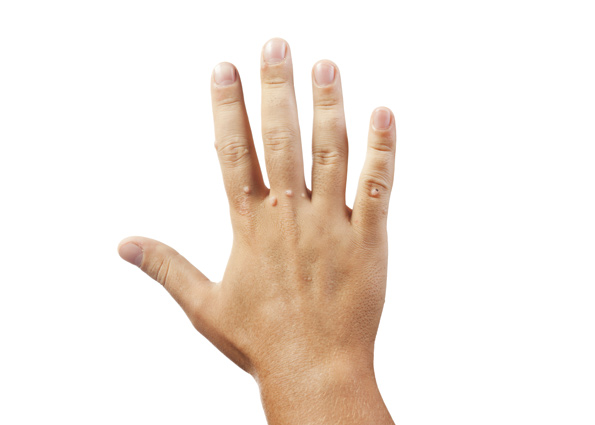

Wart
What is the cause?
- It is an infection caused by the Human Papilloma Virus (HPV). It mainly occurs on the skin or mucous membranes, causing excessive growth of the epidermis, resulting in papules protruding from the skin.
- There are several types of human papillomavirus, but types 1, 2, and 4 are the most common causes.
- It can be caused by exposure to the virus when walking barefoot in public facilities or school gymnasium
Who gets the wart?
- Mainly for children and young people.
- Approximately 30% of warts develop on the soles of the feet.
- Of children between the ages of 4 and 12, approximately 20% of children have warts.
What are the types of warts?
Depending on their location or shape, they can be divided into:
- Common wart
The most common type, papules of varying sizes with rough, raised surfaces occur on the back of the hands, around the nails, face, lips, and ears. - Flat wart
It appears as small papules with a flat surface, and the individual lesions merge, sometimes forming irregular plaques. It appears well on the forehead, chin, nose, around the mouth, and the back of the hand. - Plantar wart
It often occurs on the palms and soles of the feet. Particularly, plantar warts can look like corns because they are under the weight pressure. If the surface of the stratum corneum is cut off and observed, multiple black spots caused by capillaries are visible, or spot bleeding occurs, it can be diagnosed as a wart. - Genital wart
– Appears well around the genitals, cervix, and anus.
– In some cases, it can also cause cervical cancer.
– Because it is highly contagious, about 50% of them can be infected with a single sexual contact, and skin lesions usually appear 2-3 months after sex.
How is the diagnosis?
- In most cases, it is possible with the naked eye.
- During pathological biopsy, there is proliferation of the epidermis, and keratinocytes modified by the virus are observed on the upper part of the epidermis.
How is the treatment?
- Salicylic acid: A drug known as W-Compound, available over the counter. There are patch, cream, and solution types, and if used early, they can be effective.
- Podofilox solution: Effective against genital warts. It cannot be used for pregnant women, infants and mucous membranes.
- Imiquimod cream: It is a therapy to fight viruses by enhancing interferon to help immunity.
- Cryotherapy: This is a freezing therapy that directly sprays liquid nitrogen. It causes slight pain, and the treatment scars remain, making it difficult to use in pediatric patients.
- Cantharidin: An ingredient extracted from Beetle, which causes blisters, which can eliminate warts. It is often used in pediatric patients as it leaves little pain and scars.
- Bleomycin: Usually used as an anticancer agent, but it is injected directly into intractable warts to treat.
Progress/complication:
- In young children, it may improve on its own, but in some cases it may get worse.
- As well as cosmetic problems, if it occurs on the soles of the feet, it may cause pain, so it is recommended to treat it quickly.
- Warts on the uterine cervix can turn into malignant and must be treated actively.
Prevention
Direct contact with wart lesions should be avoided.
Difference between wart and corn:
Wart
- There are several black dots.
- It can occur at any location.
- There are many cases where there are many in a group, and there is a tendency to spread out.
- As it is contagious, it can grow in number and needs to be treated quickly.
- Cause: Virus
Corn
- There are no black dots.
- It usually occurs in areas that meet shoes or where weight is carried.
- Often located alone and not contagious.
- When you put the weight, it can hurt. For example, when standing or running, it hurts, but if you sit still, it does not hurt.
- Cause: abnormal keratin proliferation. It refers to the continuous mechanical stimulation of the skin such as hands and feet, and a small amount of dead skin cells are embedded in the skin in a cone shape.
Steven Koh, MD
Family Medicine
Edmonds Medical Clinic